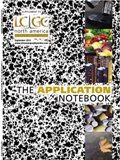GPC Clean-Up of Black Pepper Prior to Analysis for Organochlorine (OC) Pesticides by GC/XSD
Gel-permeation chromatography (GPC) is a highly effective postextraction cleanup method for removing high molecular-weight interferences such as lipids, proteins, and pigments from sample extracts prior to analysis.
Michael Halvorson and Laura Chambers, OI Analytical
Gel-permeation chromatography (GPC) is a highly effective postextraction cleanup method for removing high molecular-weight interferences such as lipids, proteins, and pigments from sample extracts prior to analysis. Postextraction GPC cleanup is used extensively for preparing food and environmental samples prior to analysis for pesticides, fungicides, semivolatiles, and other environmental contaminants. The FDA Pesticide Analytical Manual and the European Committee for Standardization (EN 1528) both recommend using GPC for separating fats and oils from food matrices prior to pesticide analysis by gas chromatography (GC). If sample extracts with high-lipid content are injected onto a GC column, the injection port and column can easily become contaminated, resulting in recovery losses and poor chromatography.
The OI Analytical GPC AutoPrep 2000 fully automates the GPC cleanup process. This system uses an autosampler for injecting sample extracts and collecting cleaned fractions into a variety of collection vessels, and features a modular design with electronic valve actuation. WinSEP™ , a Windows®-based program, controls the GPC AutoPrep 2000 and includes extensive quality monitoring features.
This study used the GPC AutoPrep 2000 for cleanup of black pepper samples prior to analyzing for OC pesticides by GC with the OI Analytical Model 5360A Halogen Specific Detector (XSD™). The XSD is the preferred detector for analyzing OC pesticides because of its extreme selectivity, ease of use, and low maintenance requirements.
Experimental Conditions
Pesticide-fortified and blank black pepper were extracted by mixing with 1:1 acetonitrile:water, filtering, and then extracting with petroleum ether by liquid-liquid partitioning. The petroleum ether extract was evaporated to dryness using a Labconco RapidVap® N2 System and reconstituted in 10 mL of GPC mobile phase for cleanup. Cleanup used the GPC AutoPrep 2000 equipped with a 700 mm × 25 mm glass column containing 60 g of Envirobeads® S-X3 resin. The system used a 5-mL sample loop with a 50:50 mixture of ethyl acetate:cyclohexane as the mobile phase (5 mL/min flow rate). The GPC column was calibrated with a calibration standard and UV detector as described in USEPA Method 3640A. The collected fractions were evaporated using the RapidVap N2 system and reconstituted in appropriate solvent for GC analysis. The reconstituted extracts were analyzed for OC pesticides using an XSD and a 2-mL splitless injection. The GC was configured with an HP5 column and ramped oven program.
Results and Conclusion

Figure 1: GC/XSD chromatogram of black pepper extracts following GPC clean-up. The sample was fortified with 1 ppm of 18 OC pesticides. 1 = α-BHC; 2 = β-BHC; 3 = γ-BHC; 4 = δ-BHC; 5 = Aldrin; 6 = Heptachlor; 7 = Heptachlor epoxide; 8 = Endosulfan I; 9 = 4,4´-DDE; 10 = Dieldrin; 11 = Endrin; 12 = Endosulfan II; 13 = 4,4'-DDD; 14 = Endrin aldehyde; 15 = Endosulfan sulfate; 16 = 4,4'-DDT; 17 = Endrin ketone; 18 = Methoxychlor.The GPC AutoPrep 2000 was a highly effective at removing the high molecular-weight interferences from black pepper prior to GC/XSD analysis. The XSD yielded excellent detection of 18 OC pesticides with no residual chromatographic interferences from sample lipids (Figure 1). Capsaicin, a component of black pepper, was detected in the GPC extracts but did not interfere with pesticide detection using this detector.
References
(1) FDA. Pesticide Analytical Manual, 1 Sec. 302,303, (2002).
(2) EPA. Test Methods for Evaluating Solid Waste, Physical/Chemical Methods; Method 3640A (1994).
OI Analytical

P.O. Box 9010, College Station, TX 77842
tel. (800) 653-1711 or (979) 690-1711, fax (979) 690-0440

Separation of Ultra-Short and Long Chain PFAS Compounds Using a Positive Charge Surface Column
December 11th 2024A separation of ultra-short and long chain PFAS (C1-C18) is performed on a HALO®PCS Phenyl-Hexyl column along with a HALO®PFAS Delay column which demonstrates excellent retention for both hydrophilic and hydrophobic analytes.

.png&w=3840&q=75)

.png&w=3840&q=75)



.png&w=3840&q=75)



.png&w=3840&q=75)














